This was a new one on me. My better half spotted it in the garden while I was out taking more waste to the recycling centre (and stopping off on the way back to take some photos of kestrels). 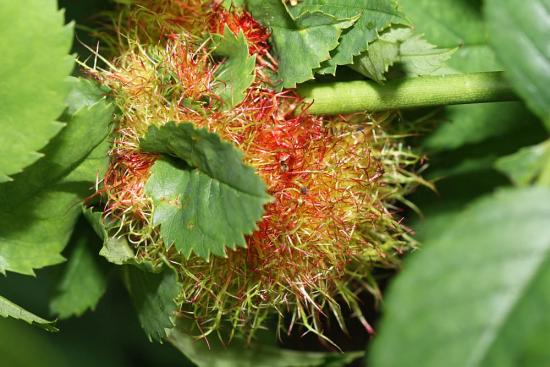
It's a rose gall, and only grows on dog roses. It's one of the odder features of the natural environment, caused by the Rose Gall Wasp (Diplolepsis rosae) laying eggs in the rose. The plant responds by developing the protective gall around the eggs. The wasp grub develops inside, well protected by the plant growth. Well that's roughly how it works, but the following link has a more technical (and accurate) description of the process.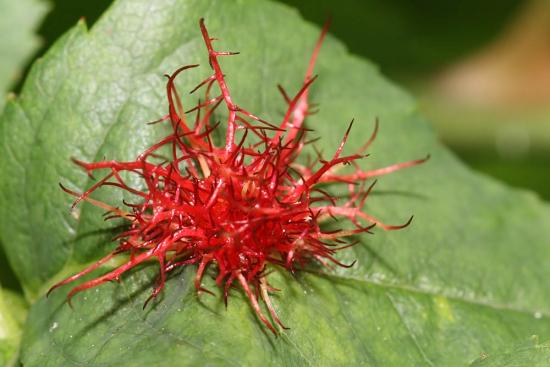
While on the theme of insects, there were a couple more unusual sightings in the garden today. First is what I think is a blue-tailed damselfly, but the pink thorax isn't something I've seen before. But their colours can vary and I can't work out what else it might be.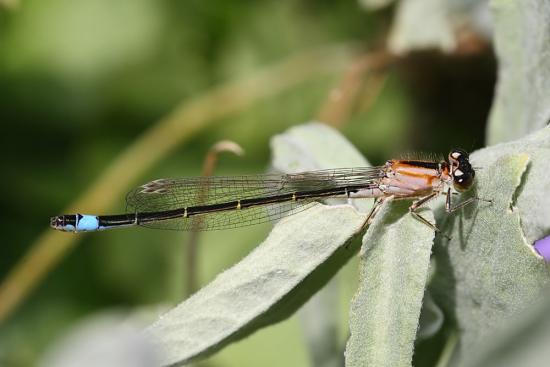
While I was photographing the damsel I saw something else that caught my eye. It was a hoverfly. Nothing unusual in that (we have hundreds of them in the garden), but the size of this one was exceptional, nearly an inch long; and the colours were striking. If my identification is correct, it's Volucella zonaria.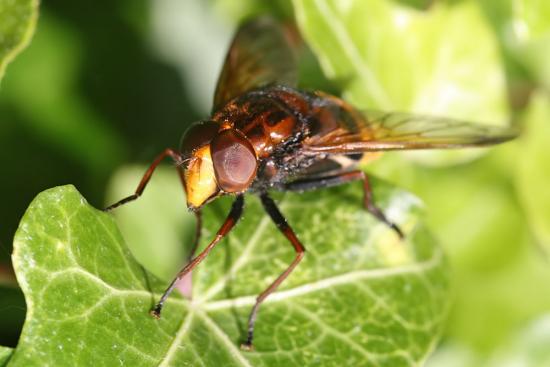
As for my trip out, I was lucky enough to see a pair of kestrels out hunting together. Most of the shots were taken from a distance (and into the sun) but I did manage one where you can see the bird carrying its prey (probably a vole). Eventually though I ended up more or less the right side of the light, and immediately below one of them. In this first shot you can see a small feather on the front of its wings. I'm not certain but I suspect this may have something to do with their ability to hover. I read something similar recently (possibly about humming birds), and seeing the photo struck a chord.
Several more shots of the kestrels are in the Kestrel album (all today's shots named 140608 xxx).
Camera note: all the insect life (and gall) were photographed with the Sigma 105mm F2.8 EX DG macro lens. The kestrels were taken with the EF 100-400mm f/4.5-5.6L USM IS lens.
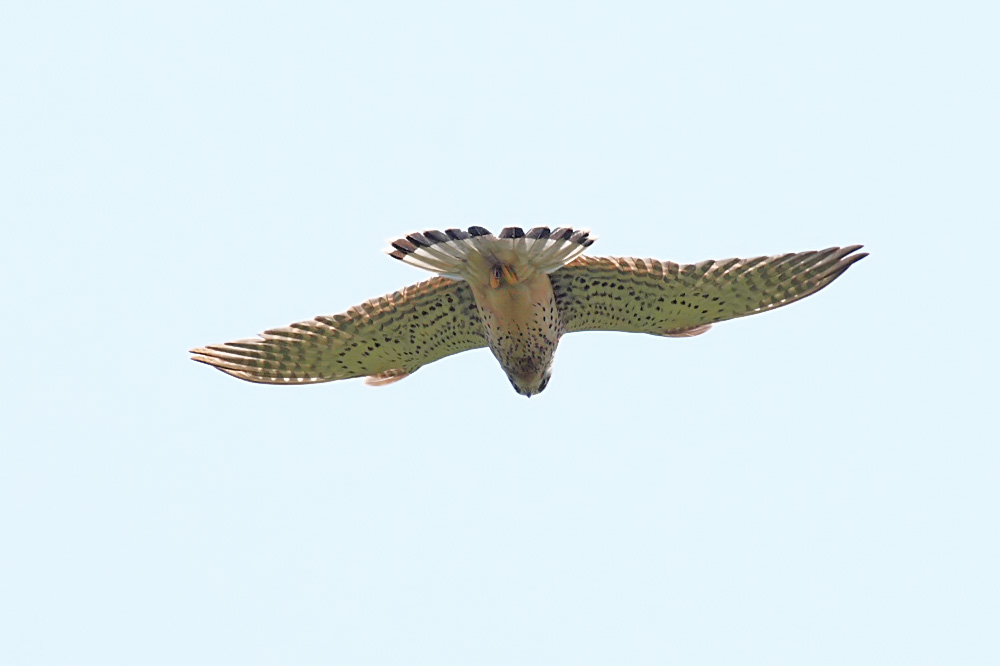
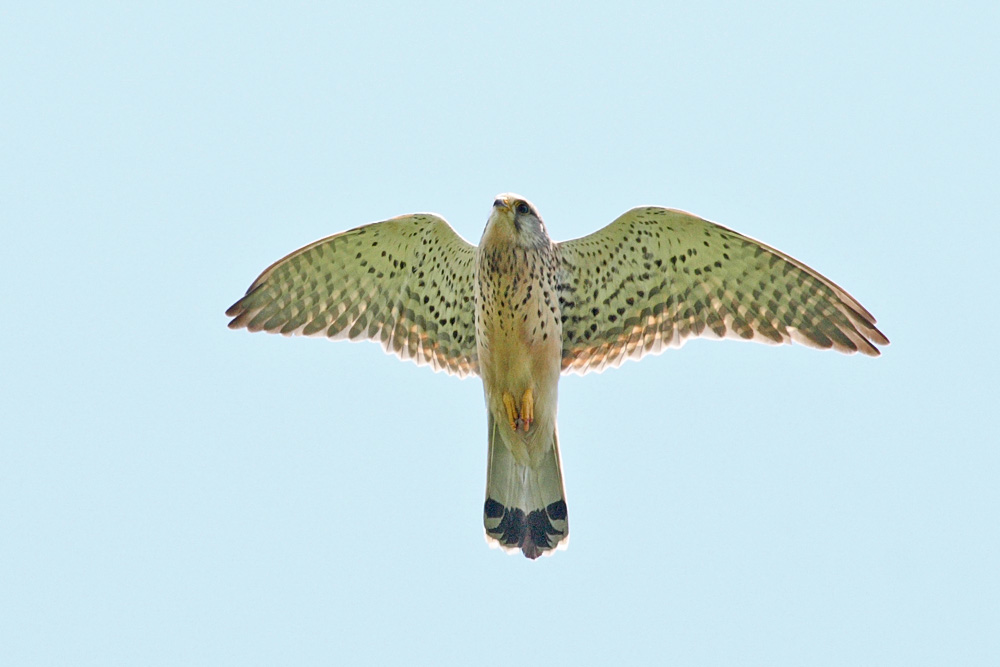
ellinidata
15 Jun 2008stellar pictures!
amazingly beautiful!
thanks for sharing!
<3 Angeliki
gdare
15 Jun 2008That last one is just…. :faint:
Vulpes vulpes
15 Jun 2008Cracking kestrel shots! You have a real knack with the camera. :yes: Yes, the pincushion is an oddity – I've come across those in the past locally.
SittingFox
15 Jun 2008Pincushions are indeed odd! Beautiful shots of the kestrel again 🙂
Cynthia23
15 Jun 2008Always superb photography! Thanks for the link about the pincushions – really cool. :up:
Words
15 Jun 2008Darko, and :faint: is more or less how I was getting the shot. I was nearly flat on the ground underneath it.
Words
15 Jun 2008Angeliki, thanks 🙂
Words
15 Jun 2008Adele, thanks. We'd not come across the pincushions before. I'm looking forward to seeing the wasp when it emerges. They're quite beautiful (as wasps go).
Words
15 Jun 2008Cynthia, thanks. The pincushions are really odd, a bit like an immune system response.
zetorres
16 Jun 2008Amazing information!
Great pictures as always! 😉
Nice work, Words! :):)
Words
16 Jun 2008Thanks ZT 🙂
Ukwildlife
17 Jun 2008Nice pics as ever.
The pink thorax is common on blue taileds – something I noticed myself last year. theres no other species with just a blue patch at the end of the abdomen….I hope after saying that!
Words
17 Jun 2008Neil. LOL to your last comment. I've since checked on WAB and there are plenty of pinks there to confirm the i.d. PHEW!!!
cakkleberrylane
17 Jun 2008Once again, amazing photos!! Very interesting about the rose gall, I seem to remember my dad mentioning this one time.
Words
17 Jun 2008Lois, it's the kind of thing so easy to miss. I'm sure they're much more common than we realize. Now that I've seen one, I'll no doubt see them all the time. 😉
BitzyMe
12 Jul 2008Rose Gall, Isn't that the way! Very interesting bit of information. Have never noticed these before.. will be looking for them from now on.
Thanks for sharing.
Words
12 Jul 2008Bitzy, you're welcome. 🙂